Understanding Studio Apartments: A Comprehensive Guide
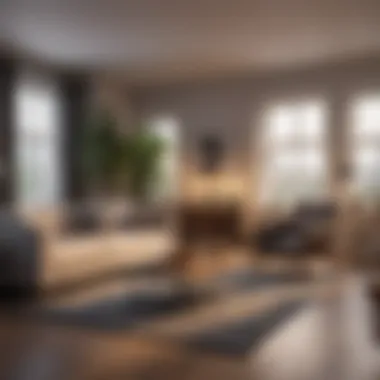
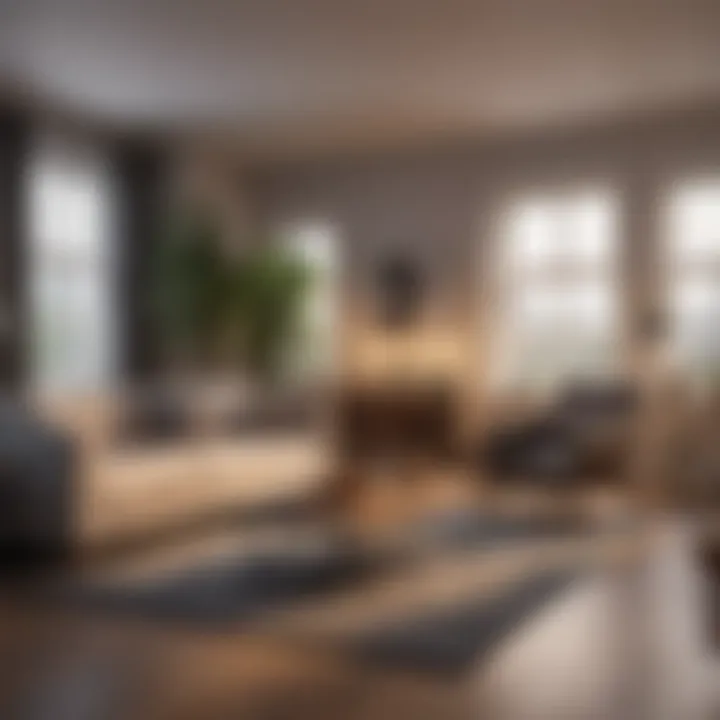
Intro
Studio apartments epitomize a modern way of living, one that is practical and often innovative in design. These compact living spaces present numerous possibilities for individuals and couples who value efficiency and style. This article serves to unravel the complexities of studio apartments by addressing their distinctive features, layout complexities, and benefits.
Through an exploration of architectural inspiration and interior design trends, we aim to provide insights into how these small spaces can enhance comfort and functionality. Additionally, the article will delve into market trends and demographics, which can guide potential occupants in understanding their choices better. Moreover, practical tips for renters and owners alike will be illuminated, alongside decor strategies and cultural relevance, so that both current and aspiring residents can appreciate the allure of studio living.
This guide is tailored for real estate enthusiasts, travel lovers, and interior design aficionados who not only seek knowledge but also a deeper understanding of the intricacies surrounding studio apartments.
Architectural Inspiration
Studio apartments often reflect various design styles and architectural influences that offer functional and aesthetic advantages.
Overview of Design Styles
The layout of a studio apartment is typically open, merging the living, sleeping, and kitchen areas. This design approach lends itself well to several popular styles:
- Minimalism: Characterized by simplicity and functionality, it employs a limited color palette and uncluttered spaces.
- Industrial: Features raw materials like exposed brick and metals, emphasizing a rugged aesthetic that often evokes urban environments.
- Scandinavian: Focuses on natural light and wood accents, promoting a warm and inviting atmosphere while maintaining practicality.
The choice of design style affects both the visual and functional aspects of a studio, making it crucial for residents to consider their preferences carefully.
Innovative Materials and Techniques
In recent years, architects and designers have embraced innovative materials that maximize the usability of studio apartments. Lightweight partitions can create separate areas without sacrificing openness. Multipurpose furniture like Murphy beds and expandable tables further enhance the adaptability of these spaces.
Energy-efficient materials and smart home technologies are increasingly prevalent as sustainability becomes more important. High-quality insulation, LED lighting, and low-water fixtures contribute to an eco-friendly living environment while reducing long-term expenses.
Interior Design Trends
As we shift to interior design, it is clear that the focus on aesthetics must harmonize with functionality.
Color Schemes and Their Psychological Effects
Choosing the right color scheme is vital in a studio apartment. Light colors such as whites, pale blues, and soft greens can create an illusion of expanded space. Darker colors can make areas feel cozier but could lead to an overwhelming sensation in smaller quarters.
Psychologically, colors affect mood and perception. For instance, warm tones like yellows can create an inviting atmosphere, while cooler tones often contribute to a calmer environment. Striking the right balance is key.
Space Optimization Tips
There are several strategies residents can employ to maximize their studio layout. Here are some practical tips:
- Furniture Arrangement: Place larger pieces against walls to open up the floor space for movement.
- Dual-Purpose Items: Opt for furniture that serves multiple purposes, such as ottomans with storage or sofa beds.
- Vertical Space: Utilize shelves and wall-mounted storage solutions to reduce clutter on the floor.
These suggestions not only enhance living conditions but also allow personal expression in decorating a compact space.
"Living in a studio apartment encourages creativity and resourcefulness, making every inch count."
In summary, this comprehensive guide to studio apartments highlights the essential elements that encapsulate their charm. From understanding architectural influences to exploring interior design trends, the goal is to appreciate the deep possibilities contained within these compact homes.
Defining a Studio Apartment
Defining a studio apartment is a crucial aspect of understanding the broader context of compact living spaces. Studio apartments are unique in their design and layout, serving a specific demographic and satisfying distinct lifestyle needs. Their significance cannot be overstated, especially in urban settings where space is at a premium. A clear comprehension of what constitutes a studio apartment lays the groundwork for exploring its advantages, challenges, and market trends.
Physical Characteristics
Studio apartments are defined by their compact layout, typically featuring a single room that combines the sleeping, living, and kitchen areas. This open floor plan is often equipped with a bathroom, while the kitchen may range from a full-sized setup to a compact kitchenette. The absence of separate rooms creates a unique living experience, forcing residents to be inventive with their space. Though dimensions can vary, most studio apartments are between 300 to 600 square feet, emphasizing functionality over formality. These characteristics make them ideal for urban dwellers seeking to maximize limited square footage, thereby encouraging a minimalist lifestyle that suits many.
Common Terminology
Understanding common terminology related to studio apartments can aid both renters and buyers in navigating the market. Terms like "open floor plan" refer to the layout that promotes a sense of spaciousness despite limited space.
Another important term is "multi-functional furniture," which emphasizes the need for furnishings that serve multiple purposes, such as a sofa bed or an expandable dining table.
Additionally, the term "lofted bed" often appears in studio discussions. Lofted beds elevate sleeping arrangements, creating additional usable space beneath.
Familiarity with these terms enhances one's ability to communicate effectively in real estate discussions and helps in making informed decisions while either searching for or designing a studio apartment.
Historical Context of Studio Apartments
The historical context of studio apartments reveals much about urban living patterns and socio-economic changes over time. As urbanization increased, the need for efficient living spaces grew, influencing how these units were designed and perceived. Understanding this context helps to appreciate the function and appeal of studio apartments today. It also reflects changes in lifestyle preferences and housing demands.
Origin and Evolution
Studio apartments can trace their roots back to the early 20th century, specifically in the 1900s. The concept of a compact living space was initially popularized by artists and bohemians in cities like Paris and New York. The need for affordable housing amidst rising urban populations drove the creation of smaller, unified spaces. These early studio apartments allowed inhabitants to live, work, and create in one area, which was particularly appealing for artists seeking an economical lifestyle.
Over the decades, studio apartments evolved to cater to a broader audience. The Great Depression and post-World War II housing shortages underscored the necessity for economical living solutions. Apartment designs adapted to the changing demands of society, ultimately transforming studio apartments from mere shelters into stylish and functional residences. The minimalist approach became largely associated with these units, favoring open spaces and multi-functional designs, which are hallmark characteristics of modern studio apartments.
Studio Apartments in Urban Development
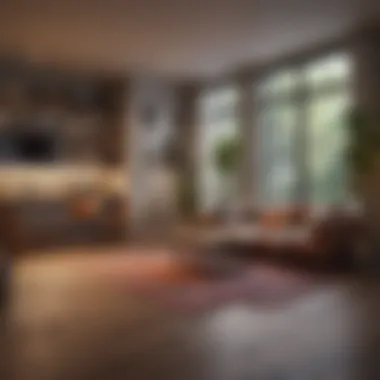
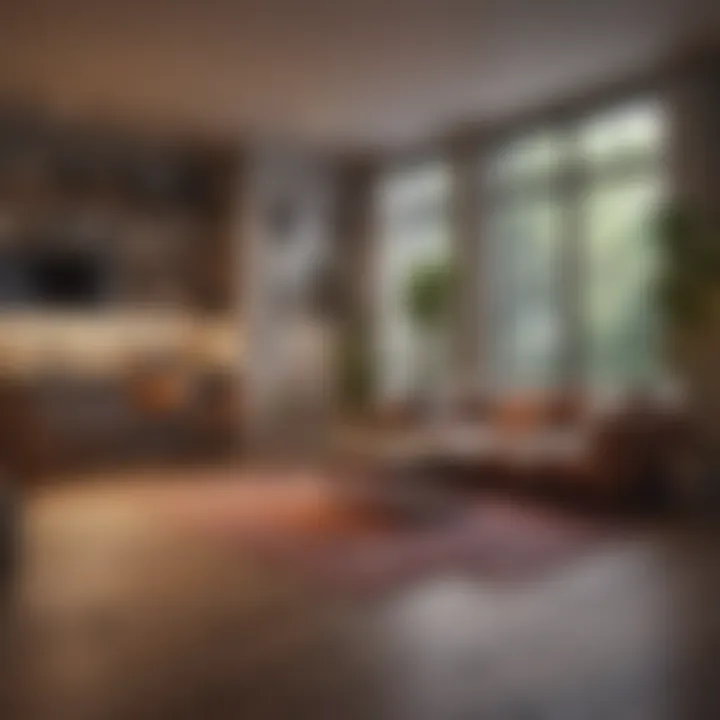
In urban development, studio apartments play a pivotal role. They exemplify the push towards denser living arrangements in metropolitan areas. As cities expand, these apartments provide a practical solution to housing shortages while maximizing land use. This trend is significant in highly populated cities like Tokyo, London, and San Francisco, where space is limited.
The demand for studio apartments has also influenced zoning laws and regulations. Many cities have adapted their building codes to encourage the development of smaller housing units, recognizing the changing demographics of city dwellers. Young professionals and students often gravitate toward these spaces due to their affordability and convenience, further driving urban planners to integrate studio apartments into new projects.
"Studio apartments are an essential component in providing housing solutions for a diverse urban population, fulfilling both economic and spatial needs."
Benefits of Living in a Studio Apartment
Studio apartments have gained a unique status in urban living, particularly for individuals seeking efficient and versatile spaces. Understanding the benefits of residing in a studio apartment can provide valuable insights for potential renters and buyers. This section delves into two key benefits: cost efficiency and the allure of simplicity and minimalism.
Cost Efficiency
One of the primary attractions of studio apartments is their cost efficiency. These compact living spaces generally come with lower rent or mortgage payments than larger apartments or homes. This financial advantage can significantly impact monthly budgets, allowing tenants or owners to allocate resources towards savings, travel, or personal development.
Additionally, maintaining a studio apartment often results in lower utility costs. Due to their smaller size, heating, cooling, and electricity needs are reduced. Households can see savings in these areas that, over time, add up to a substantial amount. No more high monthly bills.
Furthermore, considering the price of real estate, studios are often located in desirable urban areas. This means residents can benefit from living in vibrant neighborhoods without straining their finances. This accessibility makes studio apartments appealing to young professionals and students who want to be close to job opportunities, educational institutions, and recreational facilities.
Simplicity and Minimalism
Living in a studio apartment often promotes a lifestyle of simplicity and minimalism. With limited square footage, residents are encouraged to downsize and carefully curate their belongings. This can lead to a more organized and less stressful living environment. The act of decluttering can contribute to psychological benefits such as reduced anxiety and improved focus.
Moreover, embracing minimalism can foster creativity. A smaller space affords individuals unique challenges that can spark innovative design solutions. As residents find ways to optimize space, they may discover new techniques for furniture arrangement or decor. This creatively driven process can transform a compact apartment into a stylish and functional haven.
"The key to a successful studio apartment lies in smart choices and thoughtful arrangements, leading not just to a home, but a lifestyle."
Common Design Layouts
Design layouts are crucial in studio apartments, as they directly impact functionality and the overall living experience. The constrained space demands thoughtful planning to integrate essential living activities without sacrificing comfort or style. Understanding different design layouts can help maximize space, making it feel more open and inviting.
Open Concept Design
An open concept design is characterized by the absence of walls separating the kitchen, living room, and bedroom areas. This layout promotes a sense of spaciousness, allowing natural light to flow throughout the apartment. One clear advantage is that it encourages social interaction and engagement, making it particularly appealing for young professionals or couples.
In practical terms, an open concept design simplifies movement within the space. When the kitchen blends into the living area, it is easier to entertain guests while cooking. Moreover, the visual continuity fosters a harmonious aesthetic, which can be enhanced through cohesive decor or a unified color palette.
However, a downside can be a lack of privacy.
- Noise from the kitchen might distract someone working in the living area.
- Similarly, the absence of designated spaces can lead to overwhelming clutter. Finding a balance is essential.
Zoning with Furniture
Zoning with furniture involves strategically placing furniture to create distinct areas within a studio apartment. This technique allows individuals to define separate functional zones without erecting physical barriers. For example, placing a sofa can designate a living space, while a desk can signify a workspace.
One of the primary benefits of zoning is that it allows for a more organized living environment.
- Utilizing area rugs can visually separate spaces without physical walls.
- Multi-functional furniture, such as a sofa bed or an extendable dining table, can enhance both form and function.
Effective zoning also encourages personal expression. Choosing unique furniture pieces or arranging them in a non-linear layout can create an aesthetically pleasing environment that reflects the occupant's style.
In summary, understanding design layouts is essential to navigate the challenges of studio living. The open concept and zoning with furniture are two approaches that can facilitate a functional and stylish living experience.
Maximizing Space in Studio Apartments
In the realm of urban living, where space often comes at a premium, maximizing the available area in studio apartments becomes essential. These small yet versatile spaces can function as complete homes when designed thoughtfully. The importance of optimizing every inch cannot be overstated. It offers both aesthetic appeal and practical functionality, enabling residents to enjoy their living environment without feeling cramped.
The ability to use space efficiently allows for a more relaxed atmosphere and enhances the overall quality of life. Whether you are renting a studio apartment as a young professional or purchasing one as an investment, understanding how to maximize space is crucial.
Storage Solutions
Effective storage solutions are vital in a studio apartment. The limited square footage means that traditional storage options may not suffice. Here are some practical approaches to consider:
- Utilize Vertical Space: Install shelving units or cabinets that extend upwards. This can help to free up floor space, creating a more open environment.
- Under-Bed Storage: Use boxes or drawers that fit under the bed for items like seasonal clothing or extra linens. This keeps belongings organized without taking up extra room.
- Over-Door Hooks: Consider hanging hooks on the back of doors for bags, coats, or hats. It makes efficient use of often-overlooked areas.
- Multi-Use Furniture: Furniture that serves more than one purpose can drastically help with storage challenges. Look for ottomans that open up or coffee tables with shelves beneath.
These strategies not only maintain order but also help in creating a refined and attractive atmosphere within the limited dimensions of a studio.
Multi-Functional Furniture
Multi-functional furniture is a game-changer in studio apartment design. It allows for flexibility and adaptability, catering to various needs that arise in small living spaces. When selecting furniture, consider pieces that serve multiple purposes:
- Sofa Beds: A sofa bed provides seating during the day and transforms easily into a bed at night, ideal for accommodating guests.
- Foldable Tables: Tables that can collapse or extend are perfect for dining or working, offering the option to save space when not in use.
- Murphy Beds: This innovative design folds up against the wall when not needed, providing a seamless way to increase floor space.
"The right multi-functional furniture can revolutionize how you interact with your space, making it both livable and enjoyable."
Investing in these innovative solutions not only maximizes space but also enhances visual appeal. The intelligent use of furniture that encompasses various functionalities is key to creating a harmonious and practical living environment in studio apartments.
Decorating a Studio Apartment
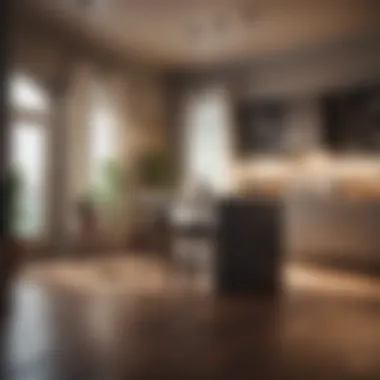
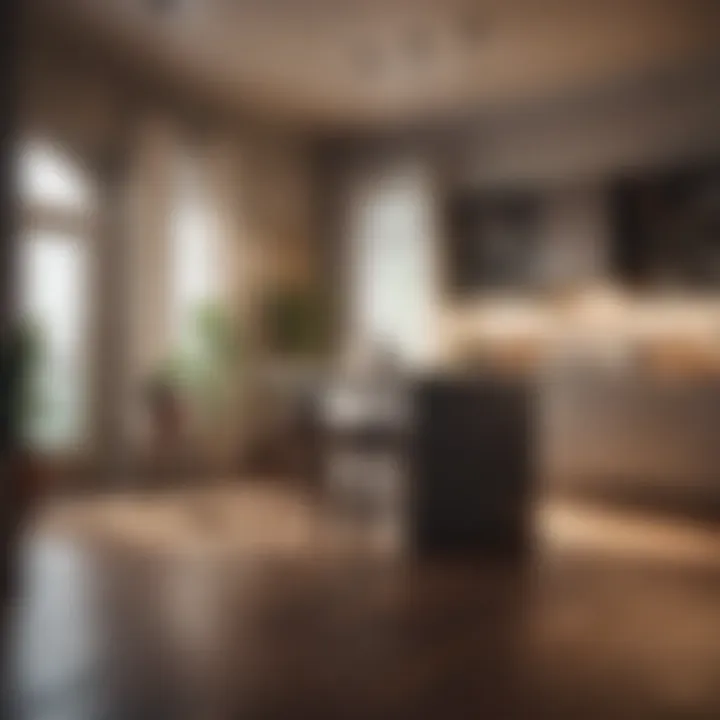
Decorating a studio apartment is more than just filling a space with furniture. It transforms a compact living area into a functional and aesthetically pleasing environment. Given the limited square footage of studio apartments, every design choice carries weight. Thoughtful decoration can optimize space while reflecting personal style.
When decorating a studio apartment, consider how each element serves multiple purposes. Design is not just about beauty; it is also about functionality. The right decor choices can create a sense of openness and comfort. Balancing style with practicality is key to achieving a harmonious living area.
Choosing a Color Palette
The color palette in a studio apartment plays a pivotal role in defining the atmosphere. Lighter colors can create an illusion of a larger space. Shades such as whites, pastels, and soft neutrals often work well.
- Use of Light Tones: Light shades reflect more light, making a room feel airy and spacious.
- Accent Colors: Incorporate deeper tones for accents. This adds interest without overwhelming the small space.
- Consistency: Maintain a consistent color scheme throughout the apartment. It helps unify different areas, visually expanding the living area.
Avoid overly dark colors, as they may create a cramped feel. Instead, find a balance; for example, using a dark sofa with light walls can provide depth while keeping the space open. Overall, the chosen colors should resonate with personal taste yet serve a functional purpose.
Personalizing Your Space
Personalization is what turns a generic layout into a unique residence. Incorporating elements that reflect individual personality can make a studio apartment feel like home. Here are several tips:
- Artwork and Decorations: Use wall art to express creativity. Large pieces can even serve to draw the eye upward, enhancing the feeling of height.
- Personal Mementos: Display items that hold memories, such as travel souvenirs or family photographs.
- Showcase Hobbies: If you enjoy reading, integrate bookshelves. For fans of music, consider a well-placed record player.
- Plants: Adding green plants can breathe life into the space and improve air quality.
"Personalization in decoration can make even the smallest of studio apartments feel vast and welcoming. It encourages the owner to embrace their identity within the confines of limited space."
By infusing personal elements into the decor, one creates a living space that is not only functional but also inviting and reflective of oneself. Personalized decoration resonates emotional warmth, essential for any home.
Cultural Significance of Studio Apartments
Studio apartments are more than just functional living spaces; they embody a certain lifestyle that resonates deeply within modern culture. This section illuminates the aspects that contribute to their cultural significance, highlighting what they represent in urban settings and how they influence various fields like art and literature.
Studio Apartments in Art and Literature
Studio apartments have captured the imagination of artists and writers for decades. These spaces often serve as a backdrop for creativity and inspiration. In literature, we find countless stories where the narrative is framed within a cozy studio setting. It is not uncommon for these narratives to reflect themes of intimacy, solitude, or urban exploration.
Prominent authors and poets have depicted studio living, showcasing the daily lives and struggles of its residents. The choice of a studio apartment can symbolize a break from societal expectations, an embrace of simplicity, or an exploration of self. Notably, writers like Ernest Hemingway, who lived in small, simple spaces, often wove their surroundings into their prose, bringing the studio apartment to life in unique ways.
Similarly, visual artists such as Edward Hopper have represented studio apartments in evocative paintings that capture the essence of urban solitude. These works often evoke feelings of nostalgia and introspection, inviting viewers to ponder the narratives of the individuals residing within those walls.
Overall, studio apartments serve as an artistic motif, representing the interplay between space, lifestyle, and identity. They are not just places where people reside, but rather reflect broader cultural themes and personal stories.
Influence on Lifestyle Trends
The trend of studio living is indicative of shifting societal norms and values. As urban areas become more populated, the demand for compact living spaces has increased significantly. This shift towards smaller living units speaks to a growing preference for minimalism, sustainability, and functional design.
Key Influences on Lifestyle Trends Include:
- Urbanization: More individuals are moving to cities for job opportunities and lifestyle choices. Studio apartments offer an affordable and practical solution in these bustling environments.
- Sustainability: Living in a smaller space promotes a minimalistic approach, which aligns with sustainable living practices. Fewer possessions mean less consumption and waste.
- Flexibility: The versatile nature of studio apartments appeals to younger generations, which value adaptability. Renting a studio provides the freedom to relocate without the hardship of managing a larger estate.
- Community Living: The compact nature of studio apartments often fosters a sense of community. Residents may share amenities, enhancing social interactions.
Studio apartments have transcended their initial purpose of providing shelter. They now symbolize modern living's complexities and conveniences. As societal values evolve, so too does the significance of studio apartments in shaping how we view home, community, and self.
"Studio apartments are more than living spaces; they are reflections of modern culture, blending creativity, minimalist lifestyles, and the social fabric of urban environments."
Challenges of Living in a Studio Apartment
Understanding the challenges of living in a studio apartment is vital for anyone considering this type of living arrangement. Studio apartments, while practical and versatile, come with distinct difficulties that can impact day-to-day life. Recognizing these challenges can help prospective renters and owners to prepare and make informed decisions.
Space Constraints
Space constraints are often the most glaring issue faced by studio apartment dwellers. Compared to traditional one-bedroom apartments, studio layouts usually do not have separate rooms for sleeping, cooking, and living. This means that every square foot must be utilized efficiently. It requires careful planning and creativity to manage essential tasks within a compact environment.
Many residents must contend with the reality of limited storage, making it crucial to assess what is truly needed. Strategies like vertical shelving or multifunctional furniture can be beneficial. However, it can be a constant challenge to maintain an organized living space.
In addition to storage limitations, the layout affects how residents interact with their environment. For example, noise from cooking may disturb relaxation areas, or the visibility of clutter can detract from overall comfort. Finding ways to separate areas, such as using room dividers, can help mitigate these disruptions but also takes up valuable space.
Potential for Clutter
Clutter becomes an inevitable concern in a studio apartment. The absence of distinct areas can lead to belongings merging together. Without careful management, one may quickly find that the space feels cramped and chaotic instead of cozy and functional.
To combat clutter, regular organization is essential. Establishing a routine for decluttering can be effective. This includes evaluating items regularly to determine what can be thrown away or donated. Furthermore, adopting a minimalistic approach to belongings can help.
Effective strategies for clutter control:
- Regularly assess belongings and keep only essential items.
- Utilize storage solutions such as storage bins or under-bed storage.
- Develop a designated area for incoming items to prevent overflow.
By being proactive in managing clutter, residents can maintain a more enjoyable living space that reflects their style and needs.
Living in a studio apartment requires intentional planning and organization to thrive in a compact space.
In summary, while studio apartments offer unique advantages, they also present distinct challenges. Understanding these challenges, particularly regarding space and clutter management, is key for a fulfilling living experience. By addressing these potential issues head-on, individuals can transform their studio living into a comfortable and efficient environment.
Market Trends in Studio Apartments
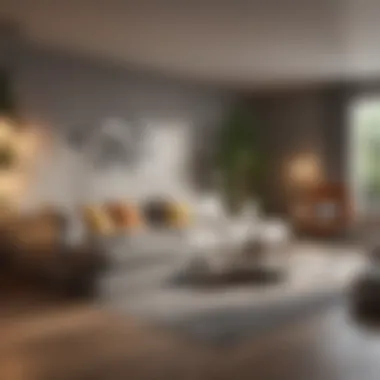

The market trends in studio apartments reveal significant insights into the evolving needs and preferences of urban dwellers. Particularly in densely populated cities, the demand for studio apartments has grown, influenced by various factors, including economic conditions and lifestyle changes. As a result, understanding these trends is crucial for anyone interested in the real estate market or those looking to invest in property.
Demand and Supply Analysis
The balance of demand and supply in the studio apartment market can significantly influence rental prices and property values. As urban areas continue to attract young professionals and students seeking affordable housing, the demand for studio apartments remains strong. This interest often leads to competition for available units, particularly in desirable neighborhoods.
The supply side also plays a vital role; new developments tailored to the increasing demand for compact living spaces emerge regularly. These projects often feature innovative designs and efficient use of space. Additionally, shifts in consumer preferences toward urban living further bolster the need for studios in city centers, likely resulting in rent increases and potential value appreciation.
Key factors affecting demand:
- Economic conditions: A strong job market leads to higher demand for rental units.
- Urbanization: More people move to cities, increasing the population density.
- Shifting lifestyles: Younger generations prefer smaller, more manageable living spaces.
Investment Prospects
Investing in studio apartments presents various opportunities, yet it comes with specifics that potential investors should consider. Generally, studios attract a diverse pool of tenants, from students to young professionals, increasing their occupancy rates. This consistent demand often translates into stable rental income, making studio apartments a favorable option for real estate investors.
The future of studio apartments also appears promising. As trends lean toward minimalist living, studios can serve as attractive assets. Moreover, in some markets, studio apartments are becoming a more affordable entry point for first-time buyers, enhancing their investment potential.
Some considerations for investing in studio apartments:
- Location: Proximity to public transport and job centers can enhance desirability.
- Amenities: Properties that offer modern conveniences often yield higher rents.
- Market research: Staying informed about local market dynamics can help investors make sound decisions.
"Investing in studio apartments aligns well with contemporary lifestyle trends, creating opportunities for both immediate income and long-term value."
In summary, the trends associated with studio apartments speak to a broader urban phenomenon where compact living meets increasing demand. Understanding these dynamics is essential for anyone looking to navigate the studio apartment market effectively.
Target Demographics for Studio Apartments
Understanding the target demographics for studio apartments is crucial for recognizing their appeal and practicality in today’s housing market. Studio apartments attract diverse groups due to their unique features and cost-effectiveness. Knowing who these demographics are helps developers, real estate agents, and homeowners design spaces that meet the needs of specific consumer segments. The two primary demographics this section addresses are young professionals and students, as well as empty nesters, each presenting distinct motivations for choosing to live in studio apartments.
Young Professionals and Students
Young professionals and students often represent a significant portion of studio apartment renters. They typically seek affordable living arrangements in urban areas, where housing costs can be prohibitive. The advantages of studio apartments align with their lifestyles, particularly in the following ways:
- Affordability: Rent for studio apartments is generally lower than for larger units, making them accessible for those at the start of their careers or studying.
- Convenience: These apartments are often located near workplaces or universities, reducing commuting times.
- Low Maintenance: Young renters often prefer less maintenance responsibility, and studio apartments typically require simpler upkeep.
Students specifically benefit from the proximity to campuses and the opportunity to live independently without the demands of larger spaces. The compact layout allows for efficient living, aligning with their often busy schedules and limited budgets.
Empty Nesters
Empty nesters, or older adults whose children have moved out, represent another demographic interested in studio apartments. This group tends to downsize after their children leave home, seeking less space but maintaining a comfortable lifestyle. Key points that appeal to empty nesters include:
- Simplified Lifestyle: Many empty nesters desire to reduce clutter and simplify their living spaces. Studio apartments offer just the right amount of space without excess.
- Community Access: Many studio apartments are located in vibrant neighborhoods with social activities, enabling empty nesters to engage with their surroundings and meet new people.
- Cost Control: Downsizing can significantly reduce housing expenses, allowing for reallocating funds for travel, retirement, or other interests.
The considerations for both young professionals and empty nesters highlight the flexibility and functional design of studio apartments. By catering to these demographics, developers can create spaces that are not only marketable but also meet the evolving needs of urban dwellers.
"Studio apartments provide a unique solution for individuals and couples alike, merging affordability with style in urban centers."
Future of Studio Apartments
The future of studio apartments is poised for significant transformation as urban living continues to evolve. The concept of compact living is gaining traction among diverse demographics, thus reshaping the design and functionality of these small spaces. Understanding the future of studio apartments is integral to grasping changes in housing preferences and developments in residential architecture. As more individuals seek flexibility and affordability in urban environments, studio apartments are expected to adapt dynamically to their expectations.
Innovations in Design
Design innovations play a pivotal role in the future of studio apartments. Architects and designers are increasingly focusing on creating versatile living spaces that maximize functionality without compromising aesthetics. Features to note include:
- Modular Furniture: Multi-functional furniture that can be easily adjusted or reconfigured will dominate studio design. For instance, Murphy beds can fold away to create more room when not in use, while expandable tables can accommodate different needs.
- Smart Home Technologies: Increasingly, technology is integrated into studio apartments. Smart lighting, heating, and security systems will enhance convenience and energy efficiency.
- Sustainable Materials: There is a shift toward eco-friendly building materials. This trend not only addresses environmental concerns but also appeals to consumers who prioritize sustainability.
In this context, studio apartments have the potential to redefine urban living by becoming spaces that cater to the desires of modern inhabitants.
Emerging Market Trends
Emerging market trends signal a growing demand for studio apartments as urbanization continues unabated. As cities expand, the need for more compact housing solutions becomes evident. Key trends include:
- Increased Interest from Young Professionals: With job opportunities often concentrated in urban centers, young people are seeking affordable housing options that align with their lifestyles.
- Shift Toward Remote Working: The rise of remote work creates a need for adaptable living spaces, making studio apartments an appealing choice for those looking to balance personal and professional lives.
- Investment Opportunities: Real estate investors are increasingly looking at studio apartments due to their affordability and demand. This opens up avenues for investors seeking to tap into the rental market, particularly in densely populated areas.
Ending
The conclusion of this article on studio apartments serves several critical roles. First, it synthesizes the extensive information presented throughout the text, distilling it into essential insights that highlight the advantages of such unique living arrangements. The idea of compact living is becoming increasingly important, not only for economic reasons but also for a sustainable lifestyle.
This section emphasizes the evolving concept of home in urban environments. For many, studio apartments offer a practical solution to high housing costs while minimizing clutter and encouraging a simpler lifestyle. As we have seen, their open layouts allow flexibility in both design and function, which is appealing for various demographics, including students, young professionals, and downsizers.
From a real estate perspective, recognizing the value and comfort of studio living elevates the understanding of emerging market trends. It is essential for potential homeowners, investors, and renters to appreciate these insights to make informed decisions.
Final Thoughts on Studio Living
Studio living represents more than just a trend; it encapsulates a lifestyle choice for many individuals seeking accessibility and adaptability. While there are challenges inherent in the limited space, creative solutions in design and organization can transform these compact apartments into comfortable and stylish homes. It encourages a minimalist philosophy that can enhance one’s quality of life. Adopting a studio apartment can lead to profound changes in how we perceive our living spaces, promoting functionality without sacrificing aesthetics.
Call to Action for Readers
As you consider your housing options, take a moment to reflect on the insights gained. Whether you are drawn to the efficiency of studio apartments or the creative potential in their design, exploring different layouts and features can be insightful. To delve deeper, visit resources such as Wikipedia or Britannica for further information. Engage with communities on platforms such as Reddit where discussions around studio living can provide various perspectives.
The time to explore this modern living concept is now. Each square foot in a studio can be a canvas for customization, simplicity, and effective lifestyle choices. Take the first step into the world of studio apartments and redefine your living experience.







